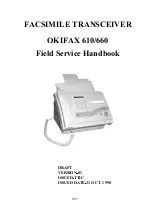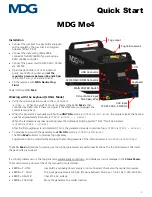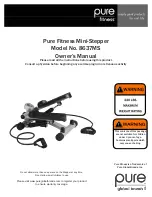
– 152 –
Trouble
Cause
Corrective measures
Page
1. The needle
thread slips off
at the start of bar-
tacking.
①
Stitches are slipped at the start.
○ Adjust the clearance between the needle
and the shuttle to 0.05 to 0.15 mm.
○ Set soft-start sewing at the start of
bartacking.
②
The needle thread remaining on
the needle after thread trimming
is too short.
○ Correct the thread tension release timing
of the thread tension controller No. 1.
○ Increase the tension of the thread take-
up spring, or decrease the tension of the
thread tension controller No. 1.
③
The bobbin thread is too short.
○ Decrease the tension of the bobbin thread.
○ Increase the clearance between the
needle hole guide and the counter knife.
④
Needle thread tension at 1st stitch
is too high.
○ Decrease the tension at 1st stitch.
⑤
Thread clamp is unstable (material
is apt to be expanded, thread is
hard to slide, thread is thick, etc.).
○ Decrease the number of rotation at 1st
stitch at the sewing start. (Extent of 600
to 1,000 sti/min)
○ Increase the number of stitches of thread
clamp to 3 to 4 stitches.
⑥
Pitch at 1st stitch is too small.
○ Make the pitch at 1st stitch longer.
○ Decrease the needle thread tension at
1st stitch.
⑦
The bird's nest reducing operation
is poorly adjusted. As a result,
the thread is not trimmed at the
predetermined position.
○ Adjust the position of moving knife before
it trims the thread. (1.1 ± 0.1 mm)
⑧
During the bird's nest reducing
operation, the number of stitches
at which the thread trimmer trims
the thread is not correct.
○ Set the number of stitches to be sewn
before thread trimming to the correct
setting using the memory switch U319.
(Thin thread: 3, thick thread: 2)
⑨
When the bird's nest reducing
function is set to ON, the needle
thread end is failed to be brought
to the hook side and the bobbin
thread is trimmed.
○ Use the wiper.
○ If the wiper wiping operation is defective,
the position of wiper should be adjusted.
○ Adjust the length of needle thread
remaining on the material to the optimum
value. (40 mm to 50 mm)
2. Thread often
breaks or
synthetic fiber
thread splits
finely.
①
The bobbin case holder has
scratches.
○ Take it out and remove the scratches
using a fine whetstone or buff.
②
The needle hole guide has
scratches.
○ Buff or replace it.
③
The needle strikes the intermediate
presser foot.
○ Correct the position of the intermediate
presser foot.
④
The needle thread tension is too
high.
○ Reduce the needle thread tension.
⑤
The tension of the thread take-up
spring is too high.
○ Reduce the tension.
⑥
The synthetic fiber thread melts
due to heat generated on the
needle.
○ Use silicone oil.
⑦
When taking up thread, thread is
pierced with needle tip.
○ Lower the needle bar height from the
engraved marker line by a half of the line
to as much as the line.
○ Check the rough state of needle tip.
○ Use the ball-pointed needle.
3. TROUBLESHOOTING
3-1. Troubles with sewing and corrective measures







































